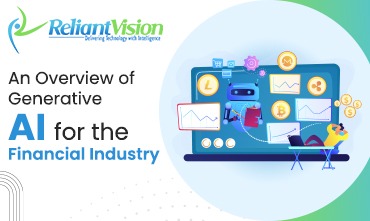Future banking institutions will increasingly use generative artificial intelligence. With its analytics-based solutions, it has the potential to transform the banking sector by automating formerly manual processes and boosting both productivity and customer satisfaction.
Artificial intelligence with a focus on producing novel information, novel ideas, and pattern-based solutions based on existing data is called generative AI. As a result, Generative AI is useful for a wide range of banking-related tasks.
To what extent does Generative AI benefit its users?
The primary benefits of generative AI for the banking industry:
- Personalization
By analyzing consumer data, such as purchase history, and identifying trends, generative AI is able to display and generate customized offers that have a more meaningful effect on the customer. This helps financial institutions increase consumer happiness and loyalty.
- Better Customer service
Chatbots powered by generative AI can help customers around the clock, allowing human representatives to concentrate on the most difficult cases. This boosts productivity and gets rid of difficulties connected to manual work. This has the potential to boost productivity and client happiness, both of which contribute to the optimization of banking expenses.
- Adapts to New Circumstances
In response to new information, generative AI may modify its behavior via a process of “learning” and “training.” The system may be retrained to accommodate changes in data, leading to a re-generation of tasks, whenever new data is supplied or existing data is modified. In order to retrain the Generative AI system, it must be fed fresh data that is representative of the changing settings. As a result, it may fine-tune its prognoses, diagnoses, and judgments.
- Flexibility
The majority of current AI systems have been designed to execute narrowly defined, static tasks and may struggle to adjust to novel circumstances. Conversely, Generative AI can learn from a wide variety of data and adapt to novel circumstances and tasks.
- Real-time decision making
In the fast-paced banking business, where time is money, the lengthy nature of traditional AI might be a drawback since it slows down analysis and decision-making. Generative AI has the ability to do real-time data analysis, which speeds up both decision-making and reaction times.
Banking as a Real-World Example of Generative AI
Application of Generative AI to the Banking and Finance Sector:
- Indicators of Fraud
Patterns in huge data sets, such as customer behavior and transaction history, provide a rich source of information for generative AI systems to learn from. This enables the system to recognize out-of-the-ordinary activity that may point to fraudulent activity and triggers alarms for further investigation.
- Confidentiality of Information
Data breaches are a major threat to the financial services sector. Synthetic data may be used in place of customer data that cannot be disclosed due to privacy concerns and data protection laws and regulations. Furthermore, synthetic consumer data are ideal for training ML models to assist banks in determining if a client is eligible for a home loan or credit and, if so, how much of a loan or credit should be given to that individual.
- Controlling Dangers
With the help of generative AI, banks and other financial institutions can better detect and respond to potential risks.
The Constraints of Banking on Generative AI
Large volumes of high-quality data are essential for generative AI to function properly. Generative AI models’ dependability and accuracy may be impacted by the banking industry’s demand for finished, updated, or consistent data.
Banks may find it difficult to explain loan decisions or other outputs generated by generative AI models to consumers or regulators due to the models’ complexity and potential interpretability issues. This lack of disclosure might cause serious problems with the law or government regulations.
Generative AI models are independent from human knowledge. In order to make sound lending choices and efficiently manage operations while minimizing risks, banks continue to rely on the expertise of trained loan officers and other experts.
Bias: The quality of a generative AI model depends on the quality of the data it was trained on. The Generative AI model might amplify any biases or flaws in the data, leading to an incorrect conclusion. This may cause unfair lending practices or other problems.
Conclusion
We may anticipate seeing more sophisticated uses of Generative AI in the financial sector as the technology develops. Customers’ faith in banks is strengthened as a result of improved efficiency, safety, and individualized service. By giving insights into complicated financial problems and recognizing patterns and trends in bank data, generative AI may assist decrease the risk of mistakes while also improving the quality of work linked with banks, money, and the practices of professionals. Banks may benefit from generative AI since it speeds up and improves the accuracy of legal research they do for their customers.

